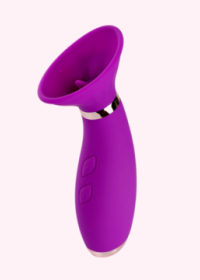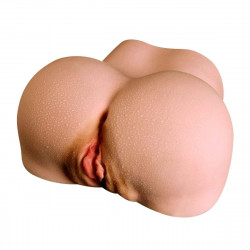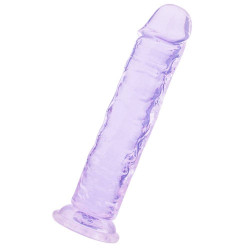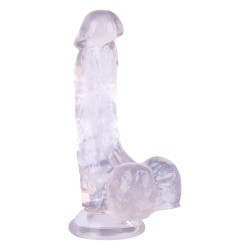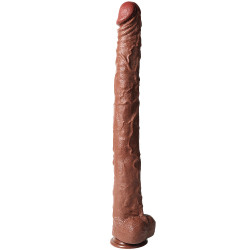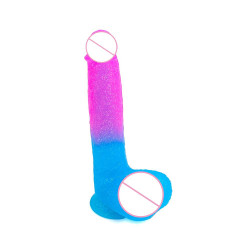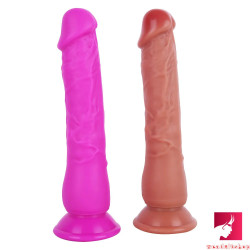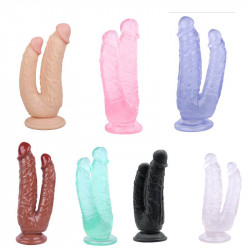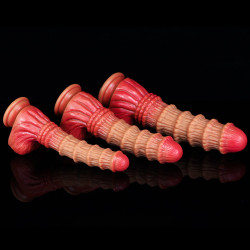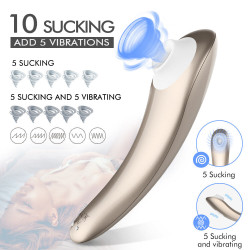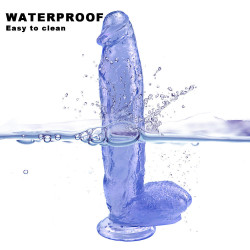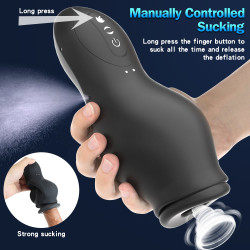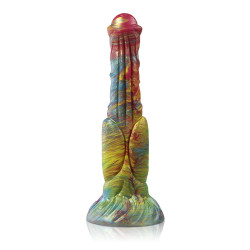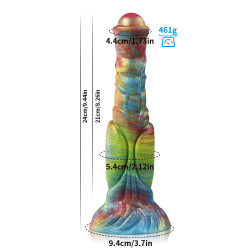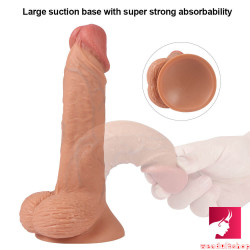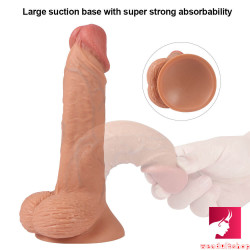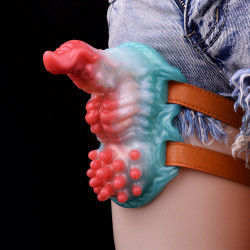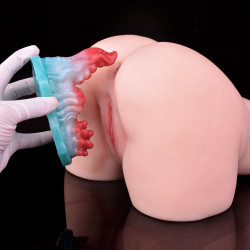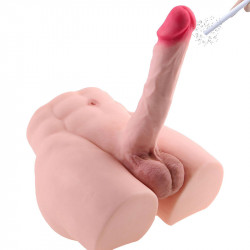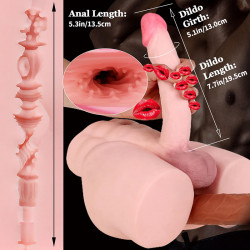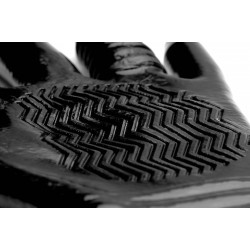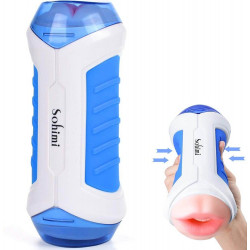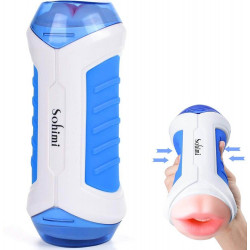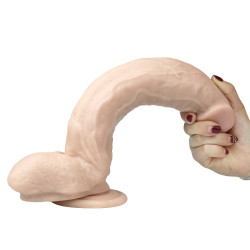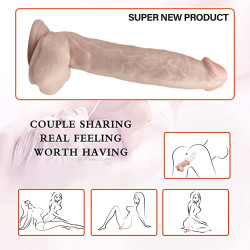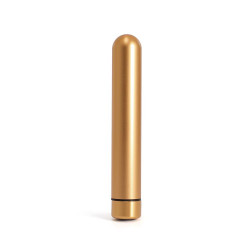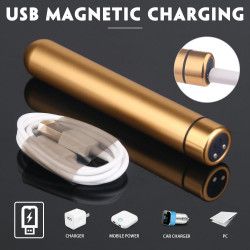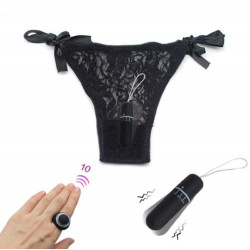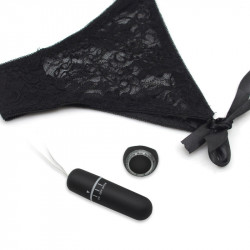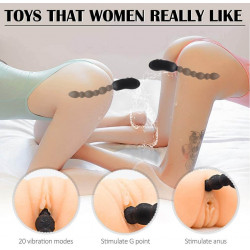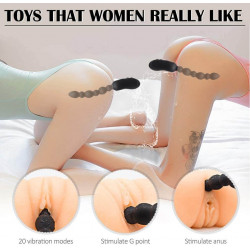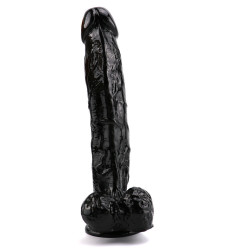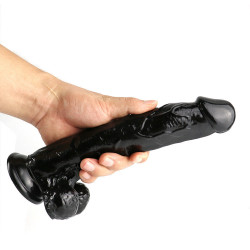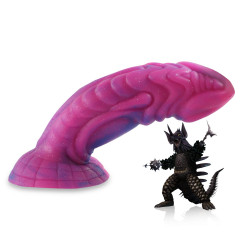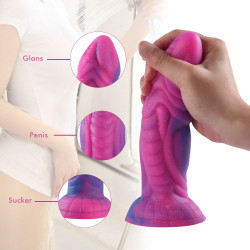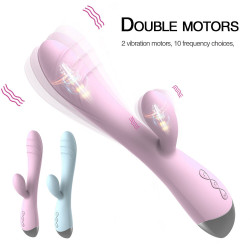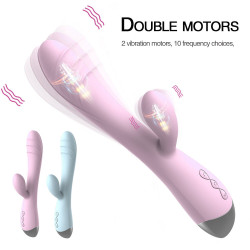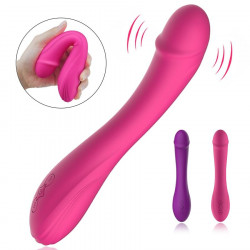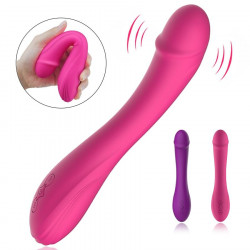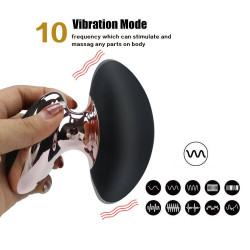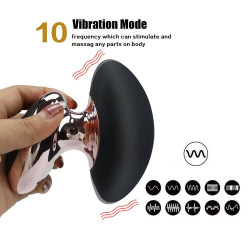
Sounding Rod Guide: Enhance Maximum Penis Enjoyment
This article reveals an instrument with a long history essential to many cultures: the sounding rod. The sounding rod has endured as a vital tool for measuring and exploration from its inception in ancient Egypt to its importance in medieval architecture and beyond. This modest yet effective tool has played a significant role in solving riddles hidden beneath the earth's surface and influencing how we perceive the world.
Key Takeaways
- Sterilization must be done correctly: To avoid infections, sanitize sounding rods both before and after each usage using the suggested methods covered in the article.
- Select materials carefully: To lower the possibility of adverse responses or infections, choose sounding rods composed of body-safe materials like silicone or stainless steel.
- Observe the urethral sound insertion and removal instructions: To prevent pain or injury, follow the article's instructions for safe-sounding rod insertion and removal procedures.
- Make safety measures a priority: Take precautions like using enough lubricant, moving carefully, and getting medical attention if something goes wrong.
- Recognize any possible health issues: Stay updated about potential urethral-sounding issues and get help from a doctor if you're having strange symptoms.
- Apply the suggested lubricant: For a smoother experience, use water-based lubricants to reduce friction and make it easier to insert sounding rods.
What to Know About Urethral Sounding
Medical vs. Recreational
For various reasons, inserting urethral sounds into the urethral opening is known as urethral sounding. It is employed in medical settings to identify and manage ailments such as urethral strictures. On the other hand, deep urethral stimulation is used for sexual gratification in recreational settings.
Urethral sounds are a proper medical diagnostic technique to evaluate the male urethra. It assists in identifying problems that may impact urinary function, such as strictures and urethral infections. Conversely, in the context of sexual exploration, people engage in urethral play to experiment with novel feelings and satisfy particular sexual preferences.
Therapeutic and Pleasurable Outcomes
Urethral sounding can be beneficial and enjoyable in a safe environment. In terms of medicine, it promotes improved urinary health by assisting in detecting and treating underlying urethral problems. On the other hand, recreational sounding gives people a chance to experiment with their bodies and feel more intense feelings during intimate moments.
To reduce the chance of harm or infection, it is essential to use the proper equipment when playing with the urethra. To lessen the possibility of adverse reactions, urethral toys—like penis sounds—should be constructed of body-safe materials like silicone or stainless steel. Proper sterilization is necessary before and after usage to avoid urethral infections and guarantee a safe experience.
Importance of Device Selection
Choosing the appropriate urethral sound is essential for a secure and pleasurable experience. To avoid irritating or harming the urethra's sensitive tissues, choose gadgets made especially for urethral play. Make sure the devices have a smooth surface. While reducing discomfort, gradually enlarging the noises can assist people in discovering their boundaries.
Consent and communication are important factors to consider while investigating deep urethral stimulation. To guarantee a mutually fulfilling experience, partners should be transparent about their preferences, boundaries, and signals. For the profession to be successful, safety, comfort, and hygiene must always come first.
How Urethral Sounding Works
Medical Purpose
Healthcare practitioners utilize urethral sounds to cure strictures and gain access to the bladder via the urethra. A urethral tube is inserted into the urethra to widen it and relieve blockages.
Urethral stimulation is an essential medical procedure for patients with urinary problems. It preserves the urinary system's health and performance. To avoid infections and guarantee patient safety, healthcare professionals perform this surgery in a sterile environment.
Sterile Instruments
Medical personnel gently stretch the urethra using sterile tools such as dilators and sounds during medical urethral sounds. These instruments are built of premium materials and are intended exclusively for medical use, lowering the possibility of consequences.
Healthcare professionals can reduce the possibility of introducing infections or causing injury during the treatment by utilizing sterile instruments. Strict adherence to safety procedures is crucial for avoiding infections and ensuring that patients with urethral soundings get positive results.
Techniques and Tools
Urethral sounding is done carefully and precisely in medical settings, emphasizing therapeutic advantages rather than enjoyment. Healthcare practitioners employ specialized instruments designed for medical usage and adhere to specific protocols to guarantee the procedure's efficacy and safety.
Alternatively, recreational sounding, which is done for sex, may use various methods and equipment. Recreational sounders frequently employ silicone sounds or other non-medical-grade instruments, which, if not used correctly, can result in infections or injury.
- Pros:
- Urinary problems and strictures can be successfully treated using medical urethral sounding.
- During procedures, patient safety is guaranteed by the use of sterile tools.
- Cons:
- Without the right equipment and methods, recreational sounding can result in infections or injury.
- Recreational-sounding devices not of medical grade might not be suitable for internal usage.
Types of Sounding Rods
Straight Rods
Straight rods are the most popular sounding rods for recreational and medicinal applications. Usually composed of silicone or stainless steel, they have a straight, smooth shape that makes insertion simple. Because of their simplicity and ease of use, consecutive rods are perfect for novices.
Straight rods are available in a range of diameters and lengths to satisfy diverse customer preferences. They are adaptable and appropriate for a variety of acoustic tasks, including private play and medical treatments. Users can select the right size depending on their comfort level and degree of experience.
Curved Rods
During urethral sounding, curved rods' minor bend near the tip enables targeted stimulation. These rods are well-liked by seasoned users looking for a more intense experience because of their curvature, which improves control and precision. Curved urethral sound rods provide a distinct sensation by reaching particular regions of the urethra.
Because curved rods can target sensitive areas and produce distinct sensations from straight rods, users frequently favour them. Because of the curved shape, users can experiment with different depths and angles, which improves the sound quality overall. Select a curved rod appropriate for your level of ability and desired stimulation.
Specialized Rods
Specialized sounding rods offer unique characteristics for increased enjoyment and safety, catering to particular demands and tastes. To further stimulation, these rods could have other components like beads, bumps, or textures running the shaft length. Specialized rods are made for seasoned users who want to try out various sensations.
Specialized sounding rods have extra characteristics like electric stimulation or vibration for a more intense sensation. To prevent injury, it's critical to handle these sophisticated instruments carefully and know how to operate them properly. Users should do extensive research and consult specialists before experimenting with speciality rods.
- Pros:
- Adaptable choices for a range of tastes
- Increased opportunities for stimulation
- Ideal for seasoned users looking for diversity
- Cons:
- requires proficiency in managing
- maybe more dangerous if not used properly.
Materials in Sounding Rods
Common Materials
Although many materials are commonly used to manufacture sounding rods, stainless steel is a common choice because of its longevity and simplicity of sterilization. Silicone is another popular substance renowned for its soft touch and flexibility.
Evaluating Pros and Cons
Stainless Steel:
- Pros:
- Extremely robust, guaranteeing extended usage without deterioration.
- It is essential for preserving hygiene and is simple to clean and sterilize.
- Cons:
- It may feel stiff and cold, making it less comfortable to use.
Silicone:
- Pros:
- It provides flexibility, which improves comfort for novices or those who want a softer touch.
- Quickly reaches body temperature, improving insertion comfort.
- Cons:
- Because it is porous, it must be cleaned thoroughly to stop bacteria from growing.
Impact on Urethral Sounding Experience
The material selection dramatically influences the entire urethral-sounding experience. For example, silicone may be preferred by people with sensitive skin due to its gentler texture, which lowers the possibility of discomfort. However, people who value longevity and ease of maintenance might choose stainless steel.
Considerations for Safety, Comfort, and Hygiene
Safety, comfort, and cleanliness must be prioritized when choosing a sounding rod material. One notable feature of stainless steel is its non-porous surface, which reduces the possibility of bacterial accumulation and guarantees complete sterilization. However, because of its stiffness, some users may find it less comfortable than silicone.
Hygiene Maintenance
Regardless of the material selected, proper hygiene maintenance is essential. Infections can be avoided, and a safe experience can be guaranteed by routine cleaning with antibacterial soap and thorough drying. Sounding rods can last longer if stored in a dry, clean atmosphere.
Proper Sterilization Techniques
Sterile Metal
Sounding rods made of sterile metal are essential for preventing urinary tract infections. When treating the genital areas, it is imperative to utilize only sterile materials.
By keeping the metal sterile, the sounding rod lowers the incidence of urinary tract infections (UTIs). It improves general health by preventing the introduction of dangerous germs into the urinary system.
Cleaning Procedures
Sounding rods must be thoroughly cleaned before and after each usage to preserve sterility.
- Clean the genitals and cavities with a medical-grade disinfectant.
- To remove any remaining bacteria, thoroughly clean the sounding rod's whole surface.
Proper cleaning techniques are crucial to avoid contamination and lower the risk of problems after the treatment.
Maintenance Practices
Regular maintenance is essential for sounding rods to last a long time and be effective.
- Keep the sounding rod separate from other medical equipment in a clean, designated place.
- Regularly check the sounding rod for wear or damage that could jeopardize its sterility.
Insertion and Removal Techniques
Safe Insertion
For medical purposes, the proper procedures must be followed when inserting a listening rod. First, ensure the hands and rod are sterile to avoid infection. Using a water-based lubricant to facilitate insertion, carefully guide the rod into the urethra.
Slowly and carefully insert the rod, letting the body adapt to each increment to prevent injury. Steer clear of abrupt motions or forceful penetration as they could result in injury or rips. If you experience pain or resistance, you must stop right away.
Gentle Removal
Gentleness and patience are essential during removal. Retract the sounding rod slowly and gently, ensuring every movement is controlled and fluid. Before proceeding, stop and reposition yourself if you experience any pain or resistance.
To increase safety, always take your time with the removal procedure. To avoid slipping, slowly remove the rod while keeping a tight hold. For advice, immediately let your healthcare practitioner know about any pain or discomfort.
Understanding Anatomy
Knowing your anatomy is essential to using a sounding rod safely. Understanding where the prostate and urethra are located can help avoid unintentional injury during insertion. Being aware of how your body reacts can also make it easier to recognize any possible problems during the procedure.
Understanding your anatomy can help you position the sounding rod correctly for safe and efficient stimulation. To improve comfort and safety, take the time to investigate and comprehend your body's interior structure.
Tips for Safe Practices
- Use only sounding rods of the highest calibre made for urological treatments.
- Make speaking with your healthcare practitioner a priority if you need advice on appropriate methods.
- Avoid using improvised tools or foreign items during sounding exercises to avoid injuries.
- Before and after every usage, make sure your sounding rods are cleaned and sterile.
- After sounding sessions, get medical help right away if you have ongoing pain, bleeding, or trouble urinating.
Safety Precautions for Sounding
Purpose-Designed Rods
To reduce dangers, it is essential to use safe sounding equipment. Only sounding rods made explicitly to maintain safety during the process should be used. These rods are made especially for this use, which lowers the possibility of issues.
Open Communication
Safe-sounding procedures require communication between the person performing the procedure and the person receiving it. It's critical that people talk candidly about their experiences and any discomfort they may have had. This contact makes it easier to readdress quickly and guarantees an enjoyable experience all around.
Body Limits Awareness
Being aware of one's physical limitations when participating in sounding exercises is critical. Users should never push themselves beyond their comfort zones and should know how far they can go safely. Comprehending and adhering to these restrictions is essential to avoid issues or injuries during the operation.
Signs of Distress
A key component of safe sounding is being alert for indications of distress. Potential signs of discomfort, such as severe pain, heavy bleeding, or strange feelings, should be explained to users. Quick action should be taken to prevent additional damage if any of these symptoms are noticed.
Potential Health Complications
Risks and Issues
Proper urethral sounding techniques might result in several health issues. One significant concern is damage to the urethra, which can cause strictures—abnormal narrowing of the urethra. Incontinence may result from this, and treatment may be necessary.
Psychological Impact
There are psychological factors to consider in addition to physical ones. Sounding can result in self-destructive actions without the necessary understanding or safety measures. Some people form a habit that could endanger their general health.
Seeking Medical Attention
Those with any sound issues must get medical assistance as soon as possible. Postponing therapy can make the problem worse and result in ER visits. Addressing these issues early can avoid long-term effects.
Recommended Lubrication for Sounding
Suitable Lubricants
The whole listening experience can be significantly improved by using the correct lubricants. Choose medical-grade lubricants made especially for this use. These lubricants lessen discomfort and guarantee a smooth entry.
Importance of Water-Based or Silicone-Based Lubricants
Because of their bodily compatibility, water-based and silicone-based lubricants are strongly advised for sounds. Water-based lubricants are a sensible option because they are simple to clean and do not leave stains on textiles. Conversely, lubricants based on silicone provide long-lasting lubrication without the need for regular reapplication.
Avoid Household Products
Lotion, oils, and petroleum jelly are household items that should be avoided when sounding. These items may cause infections, allergic reactions, or irritation. Using non-sterile materials raises the possibility of dangerous microorganisms entering the urethra, which could result in health issues.
Closing Thoughts
In conclusion, a safe and pleasurable urethral-sounding experience depends on knowing the specifics, including the different kinds of sounding rods, appropriate sterilization methods, and any health risks. You can reduce dangers and optimize the advantages of this practice by being familiar with suggested lubrication methods, insertion and removal techniques, and crucial safety precautions. When investigating urethral sounds, remember to put your health and well-being first.
Be sure to adhere to appropriate practices at every stage as you cautiously and carefully explore the varied world of sounding rods. Your safety is your top priority, so be knowledgeable, employ safe practices, and get help when needed. To get the most out of your experiences, embrace this trip with confidence and responsibility. It sounds joyful!
Frequently Asked Questions
Q: What is Urethral Sounding?
A: Inserting a listening rod into the urethra for recreational or therapeutic purposes is known as urethral sounding. To prevent harm, vigilance and appropriate techniques are called for.
Q: How does Urethral Sounding work?
A: To activate nerve endings and produce delightful sensations, sounding rods are placed into the urethra. For safety, using the proper lubricant and gentle insertion methods are essential.
Q: Are there different types of Sounding Rods available?
A: It's true that there are different kinds of sounding rods, such as graded, vibrating, curved, and straight rods. During urethral play, each variety provides a distinct feeling and sensation.
Q: What materials are used to size rods?
Sounding rods can be made from various materials, including silicone, glass, plastic, and stainless steel. Selecting a material that is safe for the body is crucial to avoid infections or allergic responses.
Q: How should I Sterilize my Sounding Rod?
A: To guarantee safe use, sterilize your hearing rod before and after each use. Effective techniques include utilizing a medical-grade sterilizing solution or boiling the rod in water.

